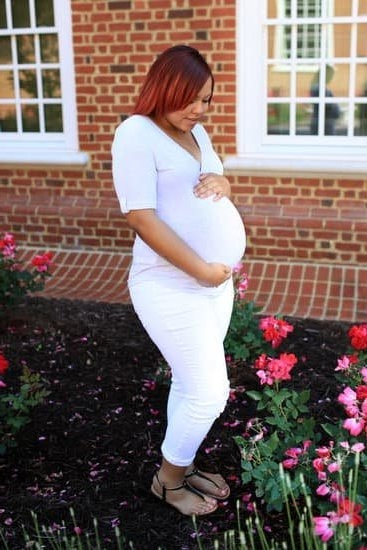How long is cat pregnancy? Understanding the feline reproductive cycle is essential for cat owners, especially if their pet is unspayed. This article will cover the signs and symptoms of pregnancy in cats, the duration of a cat’s pregnancy, the stages of cat pregnancy, how to care for a pregnant cat, potential complications during feline pregnancy, preparing for the arrival of kittens, and post-pregnancy care for mother cat and kittens.
Cats have a unique reproductive cycle that differs from other animals. It is crucial to be aware of the signs and symptoms of pregnancy in cats to provide proper care for expecting felines. Additionally, knowing how long a cat’s pregnancy lasts is important in preparing for this significant event. Understanding these aspects can help ensure the health and well-being of both the mother cat and her future kittens.
In this article, we will delve into the duration of a cat’s pregnancy and explore each stage of development. We will also discuss how to recognize when a cat is pregnant so that appropriate measures can be taken to support her through this crucial time. Finally, we will provide valuable information on caring for a pregnant cat as well as what to expect during and after her pregnancy.
Signs and Symptoms of Pregnancy in Cats
Cats, like humans, go through a series of physical and behavioral changes when they are pregnant. It is important for cat owners to be aware of the signs and symptoms of pregnancy so that they can provide the necessary care for their feline friend. One of the most common signs of pregnancy in cats is a change in appetite.
Some pregnant cats may eat more than usual, while others may experience a decrease in appetite. Additionally, some cats may exhibit nesting behaviors as they prepare for the arrival of their kittens.
Another noticeable symptom of cat pregnancy is a change in the cat’s nipples. This usually occurs around three weeks into the pregnancy, as the cat’s body prepares for lactation. The nipples will become larger and more pinkish in color. Pregnant cats may also show signs of increased affection towards their owners or other pets in the household. On the other hand, some cats may become more withdrawn and seek out quiet, secluded spots to rest.
It is important to note that not all cats will display obvious physical symptoms of pregnancy, especially during the early stages. In such cases, it is best to consult with a veterinarian for confirmation. Cat owners should also keep in mind that false pregnancies can occur in female cats, wherein they exhibit all the signs of being pregnant without actually being so. Consulting with a vet will help clarify any doubts regarding a cat’s pregnancy status.
| Signs and Symptoms | Description |
|---|---|
| Change in appetite | Some pregnant cats may eat more or less than usual. |
| Nesting behaviors | Pregnant cats may start exhibiting nesting behaviors as they prepare for their kittens’ arrival. |
| Change in nipple appearance | The nipples of pregnant cats will become larger and pinker as they prepare for lactation. |
Duration of a Cat’s Pregnancy
The duration of a cat’s pregnancy, also known as gestation, is an essential aspect of feline reproduction that every cat owner should be aware of. Understanding how long a cat’s pregnancy lasts is crucial for providing proper care for your pet during this important time.
A cat’s pregnancy typically lasts between 63 to 65 days, or roughly nine weeks. However, the exact length of a cat’s pregnancy can vary depending on factors such as the individual cat’s breed and health. It is important to keep track of when your cat mated in order to anticipate when she may give birth.
During the first few weeks of gestation, it can be challenging to determine whether or not your cat is pregnant as there may not be any noticeable physical changes. It is recommended to consult with a veterinarian if you suspect that your cat may be pregnant, especially if she has been in contact with male cats.
To best prepare for the arrival of new kittens, it is crucial to monitor your pregnant cat closely and provide her with the appropriate care and support throughout her pregnancy. This includes ensuring she has a comfortable and secure environment, providing balanced and nutritious meals, and arranging regular veterinary check-ups to ensure both the mother and kittens’ health are being properly cared for.
- Monitoring for signs of pregnancy
- Providing proper nutrition and care
- Scheduling regular veterinary check-ups
The Stages of Cat Pregnancy
During the stages of cat pregnancy, there are some key milestones and developments that occur as the kittens grow inside their mother’s womb. Understanding these stages can help cat owners provide the best care for their pregnant feline companions.
Early Stage (Week 1-2)
This is the period immediately after fertilization when the embryos travel to the uterus for implantation. During this time, it might be difficult to detect any physical changes in the cat. However, she may display behavioral changes such as increased affection or a decrease in appetite.
Middle Stage (Week 3-6)
Around week 4, the veterinarian may be able to confirm the pregnancy by palpating the cat’s abdomen. As the pregnancy progresses, the mother cat’s belly will start to expand noticeably, and her nipples will become more prominent and pink in color. It is during this stage that she may start to exhibit more nesting behaviors as she prepares for the arrival of her kittens.
Late Stage (Week 7-9)
In the final weeks of pregnancy, the mother cat’s appetite will increase significantly as her body prepares for nursing her litter. She may also become more restless and seek a quiet, secluded place to give birth. It is important to monitor her closely during this time and provide a comfortable and safe space for her labor and delivery.
Understanding these stages of cat pregnancy can help pet owners anticipate what to expect and prepare accordingly for all aspects of care during this special time for their feline companion.
How to Care for a Pregnant Cat
Understanding the feline reproductive cycle is crucial for cat owners, especially when it comes to caring for a pregnant cat. Pregnancy in cats typically lasts around 63-65 days, with some variance depending on factors such as breed and the number of kittens in the litter. It’s important to be able to recognize the signs and symptoms of pregnancy in cats, so that you can provide the appropriate care and support for your pet during this time.
During a cat’s pregnancy, there are several stages that she will go through. These include the early stage of pregnancy, where hormonal changes may cause her to exhibit signs such as increased appetite and nesting behaviors. The midpoint of pregnancy is marked by visible weight gain and the ability to feel movement within her abdomen. In the final stage, your cat may become more restless as she prepares for labor and delivery.
Caring for a pregnant cat involves providing proper nutrition, suitable living conditions, regular veterinary check-ups, and lots of love and attention. It’s important to ensure that your cat has a balanced diet that meets her increased nutritional needs during pregnancy, as well as a quiet and comfortable space where she can rest undisturbed.
Regular visits to the vet will allow for monitoring of your cat’s health throughout her pregnancy and help address any potential complications that may arise.
Potential Complications During Feline Pregnancy
During a cat’s pregnancy, there are potential complications that can arise, just as with any other animal. It is important for cat owners to be aware of these potential issues in order to provide the best care for their pregnant feline companion. Below are some common complications that may occur during cat pregnancy:
1. Gestational Diabetes: Just like humans, cats can also develop diabetes during pregnancy. This condition can lead to high blood sugar levels and may require special dietary management or insulin injections.
2. Eclampsia: Also known as milk fever, eclampsia is a serious condition caused by low blood calcium levels in the mother cat. This can occur shortly before or after giving birth and can lead to muscle tremors, seizures, and even death if not treated promptly.
3. Dystocia: Dystocia refers to difficult or obstructed labor, which can be caused by various factors such as oversized kittens, maternal health issues, or abnormal positioning of the fetuses. This condition requires immediate veterinary attention to prevent harm to the mother and her offspring.
It’s crucial for cat owners to closely monitor their pregnant feline for any unusual symptoms or behaviors that may indicate a complication. Regular veterinary check-ups and prompt intervention in case of any concerns are essential in ensuring a safe and successful pregnancy for the mother cat and her kittens.
Preparing for the Arrival of Kittens
Setting Up a Safe and Comfortable Space
Before the newborn kittens arrive, it’s important to prepare a safe and comfortable space for them in your home. Choose a quiet, warm, and secluded area for the mother cat to give birth and care for her kittens. A cozy and clean nesting box with soft bedding will provide a secure environment for the mother cat and her litter.
Stocking Up on Supplies
Gather all the necessary supplies to have on hand when the kittens are born. These may include kitten formula, feeding bottles, a heating pad, towels for cleaning, and a scale to monitor the kittens’ weight gain. It’s also essential to have a veterinarian-approved kitten food ready for when the kittens are weaned.
Preparing Mentally and Emotionally
Welcoming a litter of kittens into your home is an exciting but also demanding time. Prepare yourself mentally and emotionally by learning about the birthing process and what to expect during labor. You may want to seek advice from an experienced breeder or veterinarian on how best to support the mother cat during labor and delivery.
By taking these preparatory steps before the arrival of the kittens, you can ensure that both the mother cat and her litter receive the appropriate care they need during this critical time period.
Post-Pregnancy Care for Mother Cat and Kittens
In conclusion, understanding the feline reproductive cycle is essential for cat owners, especially when it comes to pregnancy. Recognizing the signs and symptoms of pregnancy in cats can help in providing the proper care and support that a pregnant cat needs. Additionally, being aware of the duration of a cat’s pregnancy, which typically lasts around 63-65 days, is crucial for preparing for the arrival of kittens.
As a cat progresses through the stages of pregnancy, it’s important to provide appropriate care to ensure the health and well-being of both the mother cat and her unborn kittens. This includes providing a comfortable and stress-free environment, offering a nutritious diet tailored to meet the increased nutritional needs during pregnancy, and regular veterinary check-ups.
After giving birth, the mother cat and her kittens will require special attention and care. It is vital to understand how to properly care for them during this post-pregnancy period in order to ensure their health and happiness. By being prepared for post-pregnancy care, cat owners can help their beloved pets transition into this new stage of life with ease.
Frequently Asked Questions
How Many Months Is a Cat Pregnant?
A cat is pregnant for approximately 63-65 days, which is about 9 weeks. It’s important to monitor a pregnant cat’s health and behavior during this time to ensure a safe pregnancy and delivery.
How Can I Tell How Far Pregnant My Cat Is?
To determine how far along a cat is in her pregnancy, you can observe physical changes such as a growing abdomen and nipples, as well as behavioral changes like increased affection or nesting behaviors. However, it’s best to consult with a veterinarian for an accurate assessment.
How Many Kittens Will My Cat Have First Time?
A first-time cat mother typically gives birth to a litter of 1-6 kittens, with the average being around 3-5 kittens. The number of kittens can be influenced by factors such as the cat’s breed and age, but each cat is unique.

Welcome to my fertility blog. This is a space where I will be sharing my experiences as I navigate through the world of fertility treatments, as well as provide information and resources about fertility and pregnancy.





